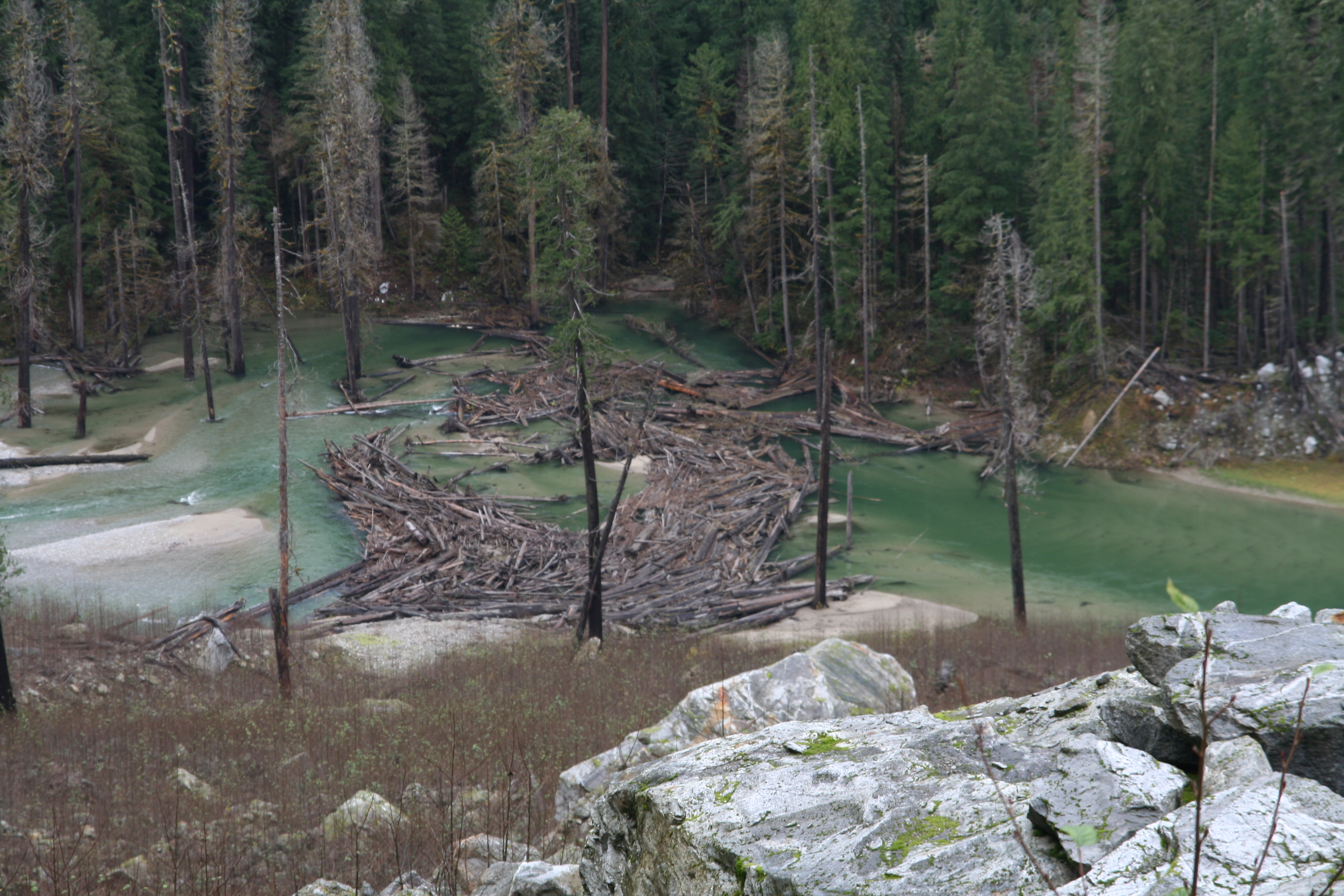|
Woody Debris (other)
{{Disambig ...
Woody debris may refer to: * Slash (logging), coarse and fine woody debris generated during logging operations or through natural forest disturbances * Coarse woody debris, fallen dead trees and the remains of large branches on the ground in forests * Large woody debris, logs, branches, and other wood that falls into streams and rivers ** Log jam, an accumulation of large woody debris that can span an entire stream or river channel See also * Dead wood (other) * Debris Debris (, ) is rubble, wreckage, ruins, litter and discarded garbage/refuse/trash, scattered remains of something destroyed, or, as in geology, large rock fragments left by a melting glacier, etc. Depending on context, ''debris'' can refer to ... [...More Info...] [...Related Items...] OR: [Wikipedia] [Google] [Baidu] |
Slash (logging)
In forestry, slash, or slashings are coarse and fine woody debris generated during logging operations or through wind, snow or other natural forest disturbances. Slash generated during logging operations may increase fire hazard, and some North American states have passed laws requiring the treatment of logging slash. Logging slash can be chipped and used (for example) in the production of electricity or heat in cogeneration power-plants. Where logging takes place on soft ground, loggers can use the branches and tops of trees as part of the timber-harvesting process to provide a track for forest machines. Using slash in this manner reduces ground damage. See also * |
Coarse Woody Debris
Coarse woody debris (CWD) or coarse woody habitat (CWH) refers to fallen dead trees and the remains of large branches on the ground in forests and in rivers or wetlands.Keddy, P.A. 2010. Wetland Ecology: Principles and Conservation (2nd edition). Cambridge University Press, Cambridge, UK. 497 p, p. 225-227. A dead standing tree – known as a snag – provides many of the same functions as coarse woody debris. The minimum size required for woody debris to be defined as "coarse" varies by author, ranging from in diameter. Since the 1970s, forest managers worldwide have been encouraged to allow dead trees and woody debris to remain in woodlands, recycling nutrients trapped in the wood and providing food and habitat for a wide range of organisms, thereby improving biodiversity. The amount of coarse woody debris is considered an important criterion for the evaluation and restoration of temperate deciduous forest. Coarse woody debris is also important in wetlands, particularly in d ... [...More Info...] [...Related Items...] OR: [Wikipedia] [Google] [Baidu] |
Large Woody Debris
Large woody debris (LWD) are the logs, sticks, branches, and other wood that falls into streams and rivers. This debris can influence the flow and the shape of the stream channel. Large woody debris, grains, and the shape of the bed of the stream are the three main providers of flow resistance, and are thus, a major influence on the shape of the stream channel. Some stream channels have less LWD than they would naturally because of removal by watershed managers for flood control and aesthetic reasons. The study of woody debris is important for its forestry management implications. Plantation thinning can reduce the potential for recruitment of LWD into proximal streams. The presence of large woody debris is important in the formation of pools which serve as salmon habitat in the Pacific Northwest. Entrainment of the large woody debris in a stream can also cause erosion and scouring around and under the LWD. The amount of scouring and erosion is determined by the ratio of the d ... [...More Info...] [...Related Items...] OR: [Wikipedia] [Google] [Baidu] |
Log Jam
A log jam is a naturally occurring phenomenon characterized by a dense accumulation of tree trunks and pieces of large wood across a vast section of a river, stream, or lake. ("Large wood" is commonly defined as pieces of wood more than in diameter and more than long) Log jams in rivers and streams often span the entirety of the water's surface from bank to bank. Log jams form when trees floating in the water become entangled with other trees floating in the water, or become snagged on rocks, large woody debris, or other objects anchored underwater. They can build up slowly over months or years, or they can happen instantaneously when large numbers of trees are swept into the water after natural disasters. A notable example caused by a natural disaster is the log jam that occurred in Spirit Lake following a landslide triggered by the eruption of Mount St. Helens. Until they are dismantled by natural causes or humans, log jams can grow exponentially as more wood arriving from u ... [...More Info...] [...Related Items...] OR: [Wikipedia] [Google] [Baidu] |
Dead Wood (other)
''Dead Wood'' is a 2007 British horror film, written, produced and directed by Richard Stiles and David Bryant and starring Emily Juniper, Fergus March, Rebecca Craven, Nina Kwok and John Samuel Worsey with Bryant appearing in a small role. ''Dead Wood'' was shown at film festivals across Italy, the UK and the United States, before being released on DVD throughout Europe and North America in 2009. Synopsis Four friends leave the city for a relaxing camping weekend in the woods. Once they get settled, a strange young woman enters their campsite looking for her lost boyfriend. One of the four himself goes missing and the rest are pitted against mysterious forces in a fight for their very survival. Cast * Fergus March as Webb * Emily Juniper as Larri * John Samuel Worsey as Milk * Rebecca Craven as Jess * Nina Kwok as Ketsy * David Bryant as Rob * Jay Worthy as Driver * Leighton Wise as Forestry Foreman Recognition Awards and nominations The film won the 'B-Movie Award' fo ... [...More Info...] [...Related Items...] OR: [Wikipedia] [Google] [Baidu] |

